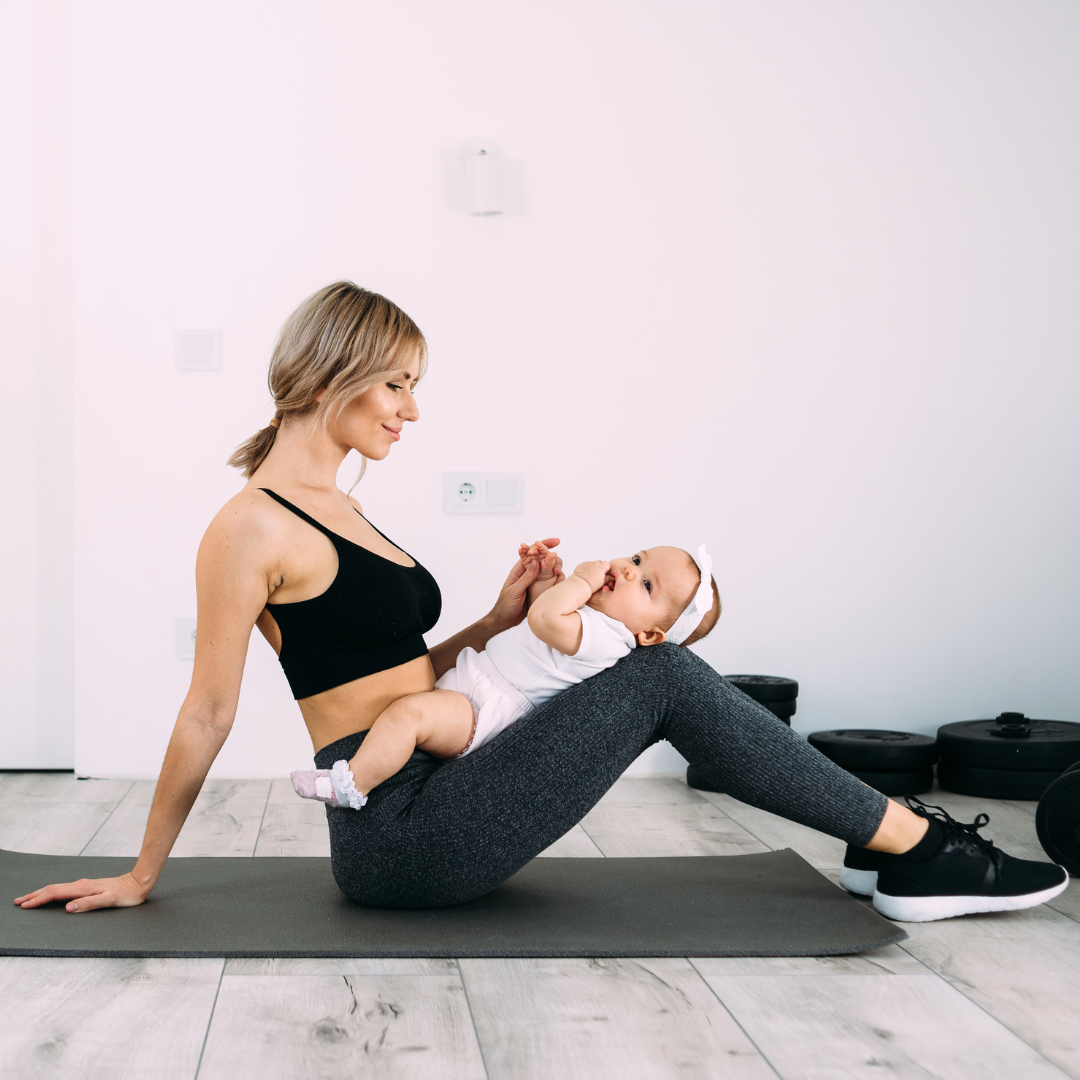
Early Postpartum Exercises: 5 Moves to get you confidently moving again from Personal Trainer Grace Strang
Even if you were super fit before and during pregnancy, postpartum exercise does come with a unique set of challenges. Firstly, your body is still healing from the amazing but tough job of delivering a baby and with a newborn in the house you might be feeling more tired than you ever have so finding the time to fit in fitness is probably the last thing you can think of.
However just 4 minutes of exercise a day can go some way in giving you the boost you need to feel like your pre-pregnancy self and no we're not talking about "getting your body back" but rather how to increase your energy, physical strength and create space for some "you" time.
The New Cub has teamed up with Personal Trainer Grace Strang, a pre & post partum exercise specialist, to lead you through the top 5 exercises she recommends to her postpartum clients.
Our bodies go through huge changes during pregnancy, birth and the period after. Whether you were exercising regularly before or during pregnancy, or not, but now want to become more active, understanding what exercises are safe to perform in the early weeks postpartum is crucial.
All women are different, and their bodies will react differently to the physiological changes of pregnancy. So it is important to not undertake any exercise until after your 6-8 week check, and to also be patient and realistic with your expectations. You are already a superwoman for growing a human! The rest will come with time.
These are my top 5 exercises for post-natal clients:
1. Walking
Most people do not tend to think of walking as exercise, but it’s actually one of the best forms of exercise you can do, post natal or otherwise! Walking outside is not only beneficial for muscular and cardiovascular health, it’s also proven to improve mental health too. 10-20 minutes of easy paced walking in the initial weeks after birth is a fantastic way to begin your exercise journey.
2. Bird dog
One of my all time favourites (type bird dog exercise into google and you are sure to find thousands of videos) The Bird Dog exercise is a great way to strengthen your deep core muscles, helping to reduce abdominal separation. It also strengthens the postural muscles, glutes and shoulders. On top of all that, it requires balance and coordination which improves neuromuscular facilitation ( a fancy way of saying coordination!)
3. Pelvic tilts
I find these the simplest and easiest to follow exercises for strengthening your pelvic floor muscles. The first step to strengthening your pelvic floor is connection. I suggest lying on your back, feet flat on the floor, imagining you are trying to pull the bony part of your hips towards each other to the midline of the body. Once you are used to that feeling you can add the ‘tuck’. Keeping both feet on the floor, pull ‘in and up’ whilst you gently tuck your tailbone under flattening your lower back to the floor. Try to repeat 10-20 reps and 2 or 3 sets.
4. Side lying clams
Our hips and pelvis bear a lot of strain during pregnancy, and they are also the attachment site for large muscles such as the abdominals and glutes. The more we can do to strengthen these muscles, the more we can support the pelvis and ease issues such as back pain and pelvic girdle pain/ pubis symphasis dysfunction. This is a great low impact exercise which strengthens deep muscles such as the piriformis.
5. Lunges/ split squats
Ok, this one may surprise you, but lunges actually engage your pelvic floor muscles more than other lower body exercises, whilst also having the benefit of gently stretching the hip flexors and quads which can become tight after prolonged periods of sitting, and tight hip flexors are a large contributor to lower back pain. Make sure the first time you try this exercise post birth your movements are slow and steady! And start with less reps (4-8) until you feel confident. The predominant muscles worked in lunges are the quads and glutes, and these are essential for daily tasks such as standing from a seated position, walking up stairs, or standing up from the floor. All tasks which before faaar more difficult carrying an ever growing baby! Gradually strengthening these muscles will stand you in great stead later down the line when you are carrying/ chasing a heavy toddler!
Lastly, it is important to note that every woman's recovery is unique and you should always listen to your body and talk to your healthcare provider about what is best for you.
Article written by Grace Strang
Grace Strang, who is a mum of 1, is the founder of Grace Strang Personal Training and is a pre & postnatal expert. Grace Strang Personal Training offers a range of personalised fitness packages designed specifically for pre & post pregnancy. Grace has been helping hundreds of new and expecting mothers feel strong and confident about labour, pregnancy and motherhood at her South London base and virtually around the UK.
You can follow Grace's Instagram here





Leave a comment
This site is protected by hCaptcha and the hCaptcha Privacy Policy and Terms of Service apply.